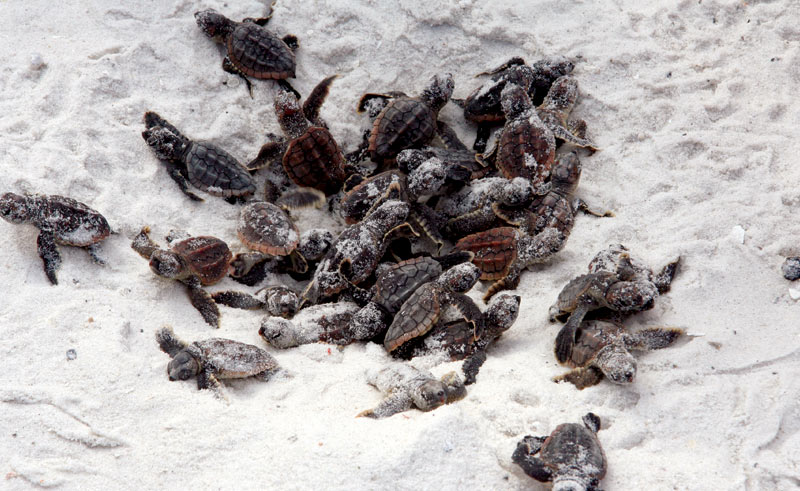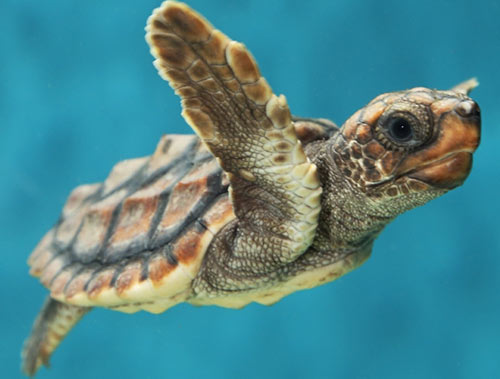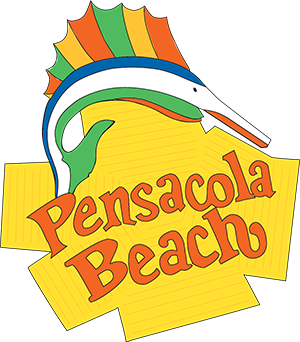We’re Expecting… Sea Turtle Hatchlings!

By Katie King
School may be starting soon but summer is still in full swing on our beaches. Undeterred by extreme heat indexes and heavy summer rains, female sea turtles have continued to make their way to county beaches to lay their eggs. Escambia County currently has 23 documented nests; 19 on Pensacola Beach and 4 on Perdido Key.
As we move into August, we expect to see nesting activity taper off and hatching activity pick up! Sea turtle nests typically incubate for around 60 days, although hotter temperatures may shorten incubation times. Nests laid in May and early June will be nearing the end of their incubation periods. Which means hatchling sea turtles could be coming to a beach near you!
 Sea turtle nests typically hatch all at once and hatchlings will emerge after sunset. Using the cover of darkness to hide from predators, the tiny hatchlings will race to the water, where they will spend the next several days in a “swimming frenzy”. This frenzy helps get them into open water and away from the majority of predators. There they’ll spend the next few years feeding and hiding in floating mats of seaweed, until they’re big enough to return to nearshore waters.
Sea turtle nests typically hatch all at once and hatchlings will emerge after sunset. Using the cover of darkness to hide from predators, the tiny hatchlings will race to the water, where they will spend the next several days in a “swimming frenzy”. This frenzy helps get them into open water and away from the majority of predators. There they’ll spend the next few years feeding and hiding in floating mats of seaweed, until they’re big enough to return to nearshore waters.
But hatchlings face an uphill battle. From the moment they hatch, they’re in danger from a variety of predators: ghost crabs, seagulls, coyotes, crows and racoons. Bright lights from buildings and flashlights can confuse them, leading them away from the Gulf of Mexico and into danger. Holes and trenches dug into the sand can trap them, making them easy targets for predators.
Only 1 in 1,000 hatchlings will survive to adulthood, so every hatchling counts!
Do your part to protect hatchling sea turtles by remembering:
- Lights Out! Leave the flashlights and cell phones at home or use a red flashlight when on the beach at night. Turn off exterior lights and close windows and curtains to keep our beaches dark.
- Leave Only Footprints! Remove all furniture and toys from the beach when you’re done for the day, including hammocks, tents, canopies, chairs, toys and sports equipment.
- If You Dig it, Fill It! Large holes, trenches and moats create dangerous obstacles for hatchling and nesting sea turtles. Avoid digging large holes on the beach and flatten sandcastles and fill in holes at the end of your day.
If you see a nest hatching or encounter hatchlings turtles on the beach, call Escambia County Marine Resources at (850) 426-1257. Do NOT attempt to handle or move sea turtle hatchlings. If you encounter a nesting turtle, turn off all lights and retreat a safe distance away.
If you are a property manager or owner and are interested in how you can make your property more turtle-friendly, please contact Samantha Bolduc at (850) 595-3460 or smbolduc@myescambia.com. For more information about sea turtles in Escambia County visit www.myescambia.com/seaturtles. All sea turtle work performed by Escambia County was completed under Florida Fish and Wildlife Conservation Commission permit #032A.

